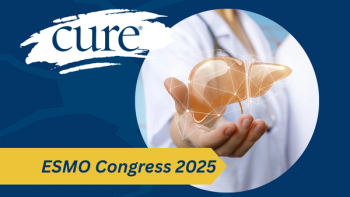
Patients With Lower-Risk Myelofibrosis May Respond to Jakafi
Although Jakafi has been approved for patients with higher-risk myelofibrosis, those with lower-risk disease may also benefit from this treatment.
Responses to treatment with Jakafi (ruxolitinib) were more frequent and durable in patients with intermediate-1 risk (low-risk) myelofibrosis, according to findings from a real-world study.
In addition, patients with intermediate-2 (high-risk) myelofibrosis had lower rates of toxicity from Jakafi treatment, as shown in findings from the study published in the journal Cancer.
After six months of treatment with Jakafi, spleen response rates were observed in 26.8% of patients, with symptom response rates in 67.9% of patients with intermediate-1 risk myelofibrosis.
“Splenomegaly (enlarged spleen) and symptoms may be extremely burdensome also in lower-risk patients, with approximately 40% of such patients starting [Jakafi] with a large splenomegaly and a high symptom score,” the study authors wrote. “This finding again supports how the clinical phenotype of [myelofibrosis] should
Predictors of responses at six months after initiating treatment with Jakafi included no cytopenia (a condition with a lower-than-normal number of blood cells, which can include hemoglobin levels, platelets and white blood cells), no high-molecular-risk mutations and blasts less than 1%. Out of all these factors, high-molecular-risk mutations continued to have a significant association with responses.
According to The Leukemia & Lymphoma Society, blasts are immature blood cells that are a result of mutated stem cells multiplying uncontrollably. They do not mature into healthy blood cells, nor do they function as such. Abnormal blasts, over time, can surpass the bone marrow’s production of normal healthy blood cells.
At the start of the study, 595 of the 1,055 patients (56.2%) with myelofibrosis had intermediate-1 risk according to two different scoring systems used to classify risk (Dynamic International Prognostic Scoring System and Myelofibrosis Score With Constitutional Symptoms – Peripheral Myeloid Immaturity). Both of these scoring systems take into account certain factors like hemoglobin levels, platelet count, spleen size and symptoms.
The spleen was palpable (meaning that it is enlarged and could be felt through the abdominal wall) at the lower edge of the rib cage at less than 5 centimeters in 5.9% of patients, between 5 and 10 centimeters in 47.4% and greater than 10 centimeters in 39.7%. Of note, 54.1% of patients were highly symptomatic.
Seventy-seven out of 167 patients had high-molecular-risk mutations including ASXL‐1, IDH1/2, EZH2, SRSF2 and U2AF1Q157.
In addition, 101 patients (19.2%) had one or more cytopenia.
According to the introduction of this published study, myelofibrosis is clinically characterized by systemic symptoms,
“Intermediate-1-risk patients may carry a significant burden of disease and are increasingly treated with [Jakafi] in the real-life setting,” the study authors wrote. “Moreover, in some European countries (e.g., Germany), approval of [Jakafi] is not restricted to higher-risk patients, but rather to those with symptomatic disease (even when intermediate-1 or low risk).”
In this subanalysis of the RUX-MF study, researchers aimed to assess the responses, toxicity and outcomes in patients with intermediate-1-risk myelofibrosis treated with Jakafi. In total, this analysis included 1,055 patients with myelofibrosis, including 548 patients with primary myelofibrosis (myelofibrosis diagnoses without a preceding myeloproliferative neoplasm) and 507 with secondary myelofibrosis (bone marrow fibrosis that may form in patients who were first diagnosed with essential thrombocythemia or polycythemia vera).
For more news on cancer updates, research and education, don’t forget to





